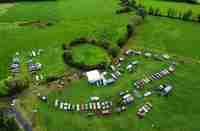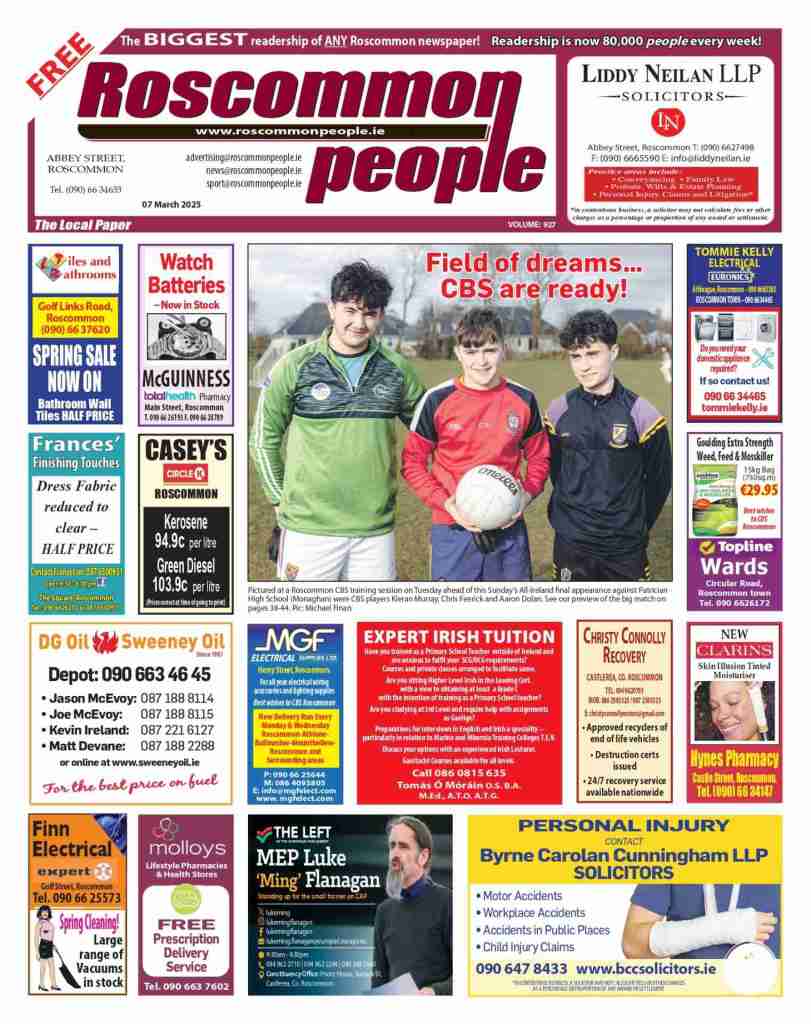Voting (and) counts: The importance of civic engagement in local politics
At the recent election count in Roscommon town’s Hyde Centre, as staff pored over mismatched piles of pink, blue, and yellow ballots from the three LEAs, and as the first day melted away until the early hours without any official first count results in sight, it was hard to look down from the press area at the seemingly endless sea of papers being shuffled about in busy hands, and reconcile this with the remarkably low preliminary turnout figures that had been bleeding into the news cycle since the day before.
But as much as someone’s first time experiencing the mayhem and monotony of an election count might lead them to believe the amount of voting sheets was objectively huge, the fact remains that the actual number of voters who visited the polling station this year was not just low, but indeed a record low.
The national turnout level for local elections was 49.4%, making this year the first time in the State’s history that more than half of registered voters failed to show up. And while in context this is not a sharp departure from the 2019 elections (which saw a 50.2% turnout), it is still significant. It is still a notable indicator of civic engagement – or perhaps more aptly, a lack of it.
And it’s odd, because generally and anecdotally, it feels as though if anything, people have become more politically cognisant. With our increased global connectivity, everyone has (or at least feels they should have) an opinion on everything. Maybe it’s the usually-touted reasons for poor turnout at play – disillusionment with the political system, perceived lack of choices, ineffective outreach and mobilisation efforts from campaigners, etc. Or maybe it has more to do with the fact that these were local elections, not a General Election (which tends to get a bigger turnout).
Because even at the recent count in the Hyde, talking to more seasoned attendees confirmed that for whatever reason, a stark contrast has indeed occurred in terms of the culture around local politics. One older couple who said they’d been attending counts for decades remarked it was the quietest one they’d ever seen. The stories I was told of “dubh ‘to the corners’ le daoine” count centres, of being poked at incessantly to hand over your ticket if you stepped out for just a moment to smoke, and even of scraps breaking out outside over tickets and disagreements… they felt foreign, juxtaposed against the occasionally sparse hall of 2024.
And admittedly, it might be easier to understand why counts specifically are garnering less attendance; as I’m sure those of you who followed along with the Roscommon People’s live updates from the Hyde will attest, the speed and clarity at which the media can communicate election information to the public online nowadays offers a far more convenient, albeit less immersive, alternative for the interested voter.
But as much as they’re reflective of the same issue (civic disengagement), if the average voter doesn’t have to be at the count to learn about the latest results anymore, that’s not to say they may as well not visit the polling booth either.
For whatever reason (and there’s probably many), people aren’t voting as much. Specifically, on the local level. If our political interests have skewed more national/global, that’s understandable – some issues simply have more meat on their bones than the issues that tend to frequent a county council’s agenda. But that doesn’t change how much the latter can directly affect our daily lives.
Because another thing I can say after attending the recent count at the Hyde, is that even if the average voter today is less cornered with engaging in local politics than the average voter twenty years ago, those who do still maintain an interest, understand the aforementioned point; understand the catered changes local politics can provide a community and the speed at which the issues of the ‘little man’ can be heard and addressed, comparative to the national scale.
But this is only if the issues of the ‘little man’ are known. And the people do know what they need – interviewing local candidates about their canvassing experiences revealed that when asked, the electorate had a keen finger on the pulse of their community’s needs. It’s that bridge that’s needed – that re-engagement with local politics and being informed about candidates on voters’ part, and consistent direct engagement with voters on politicians’ parts – in order to demonstrate just how much grassroots politics can do. How impactful local politics can, and should, be.
You get a weird sort of prideful feeling watching a count, watching ‘democracy in action’ as it were. Seeing the meticulous teamwork of clerks, tally people, photographers, journalists and public, all operating together in (often frantic) harmony – sharing the latest updates they received, speculating, theorising, etc. You get a glimpse of the community in action as you wait to see who will represent it.
It is a very heartening thing – and it would be great to see how much more heartening it’d be with the engagement of the other half of the electorate too.






